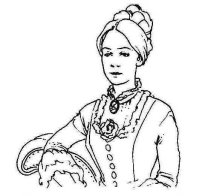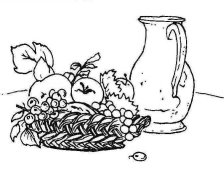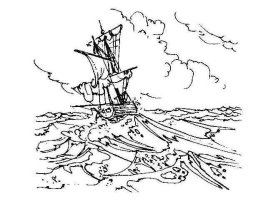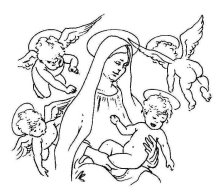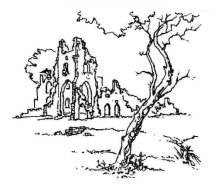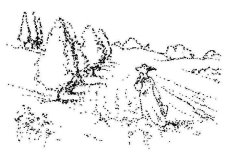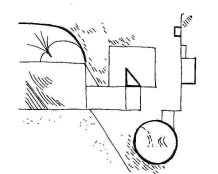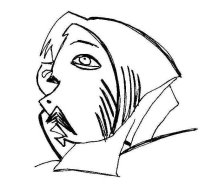Конспект уроку з англійської мови по темі Живопис 10 клас
Дана розробка може використовуватися як другий урок з теми "Живопис " . Стараюсь застосовувати найбільш доцільні форми, методи, прийоми освітнього процесу ,які сприяють оволодінню учнями глибокими знаннями з предмета. Багатоваріантність, гнучкість форм організації різних видів діяльності: індивідуальна, парна, групова, колективна сприяють успішному опануванню школярами англійською мовою. Тому ретельно підбирала такі вправи які б активізували пізнавальну діяльність учня при вивчені даної теми. Використовувала такі технології як: навчання у співпраці ,проектні технології, активне використання Інтернету ,
Домінуюча форма даних уроків – це діалог між учнями, учнями і вчителем. Кожна дитина – індивідуальність, не схожа ні на кого іншого. Педагогічна майстерність,на мою думку, полягає в тому, щоб настроїтися на внутрішній світ учня, зрозуміти його унікальність, допомогти йому розвиватися.
В ході таких уроків з англійської мови відбувається процес оволодіння мовою як засобом спілкування для сприйняття світу, людей та ідей. Така діяльність проходить ефективніше в рівноправній співпраці, активному пошуку, в вирішенні проблемно-пошукових завдань і досягненні значимих цілей через подолання перешкод.
Урок 2
Тема: Живопис.Жанри живопису.
Мета та цілі уроку :
- активізувати лексичний матеріал з теми у мовленні учнів, ознайомити їх з жанрами живопису; тренувати учнів у говорінні та читанні з повним розумінням тексту; повторити граматичний матеріал: минулий доконаний час;
- розвивати вміння самостійно аналізувати твори живопису, вміння висловлювати свою думку за темою уроку, адекватно реагувати в ситуації спілкування;
- виховувати духовність, естетичний смак і повагу до живописних пам’яток людства; прищеплювати інтерес до витворів мистецтва.
Тип уроку: розвиток лексичних навичок та умінь.
Обладнання: підручник, репродукції картин, індивідуальні картки, граматичні схеми.
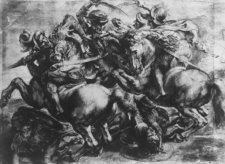
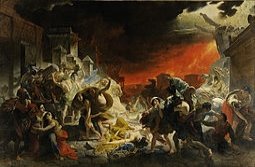
Хід уроку:
І. Підготовка до сприйняття іншомовного мовлення:
1. Привітання:
T: Good morning! How are you today?
2. Повідомлення теми та мети уроку. Оголошення цілей уроку.
T: we’ll continue discussing art in general and painting trends and genres in particular. Besides, we’ll …….
By the end of the lessons you will be able to:
- discuss paintings;
- practice grammar skills;
- reinforce vocabulary related to the topic;
- develop retelling skills;
- know more about painting trends and genres.
3. Уведення в іншомовну атмосферу
(Учні обговорюють цитату та висловлюють свою думку щодо неї.)
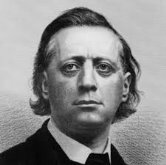 “Every artist dips in his own soul, and paints his own nature into his pictures”. Henry Ward Beecher
“Every artist dips in his own soul, and paints his own nature into his pictures”. Henry Ward Beecher
T: Now look at the quotation of a well-known English writer W. Somerset Maugham.
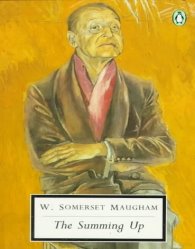
“There is nothing but art. Art is living. To attempt to give an object of art life by dwelling on its historical, cultural or archaeological association
is senseless…” (W.Somerset.Maugham“TheSummingUp”)
T:What do you think about it?
II. Основна частина уроку:
1. Перевірка домашнього завдання:
- перевірка домашнього завдання за індивідуальними картками.(Картки додаються)
2.Фонетична зарядка :
T: Look at the screen .let’s read the poem!
Life is like a piece of art,
It requires lots of heart.
Choose your paint and your brush
Take your time avoid the rush
Before your paint, choose your theme
Do not be afraid, to follow your dream.
It is alright, to make a mistake
Your painting is real , it is not fake.
Look at your painting, do not be crying,
Begin again, keep on trying
Your painting is never fully complete,
Enjoy the process, make sure it is sweet.
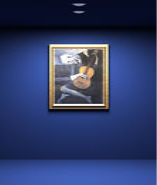
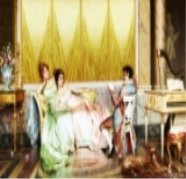
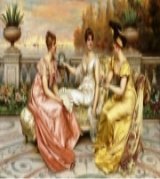
3. Активізація лексичних одиниць.
- Робота в групах: (Group work )
- Divide the words into three groups : nouns, adjectives and verbs.
Describe, canvas, drawing, creator, culture, landscape, light,
creative, paint, draw, shadow, art, painter, to impress,
painting, exhibition, gallery, reflect, impression, genre,
lyrical, emotional, reflect, depict, prominent, artist, masterpiece, attract, admire, realistic.
2. Read and match the words with their definitions.
|
a) a picture made using very small pieces of glass or stone |
|
|
2. drawing |
b) a picture made using paint |
|
3. photograph |
c) pots, bowls etc made of clay |
|
4. mosaic |
d) a work of art made of materials such as stone, metal, or wood |
|
5. collage |
e) a picture drawn with pencils or pens |
|
6. sculpture |
f) a picture made by sticking paper, cloth, or other pictures onto a surface |
|
7. ceramics |
g) a picture made using a camera |
|
|
|
4.Pозвиток навичок читання. Читання лексичних одиниць.
ART
- something that an artist has produced
art a way of representing things or expressing ideas, using pictures, sculpture, and other objects that people can look at: a book about German art in the 19th century. Is a pile of bricks in a gallery really art? What kind of art do you like?
work of art something produced by an artist, especially something that most people agree is of very high quality: Several priceless works of art were badly damaged when the palace was bombed.
Plural: works of art
work a picture, statue, sculpture etc - use this especially when you are also saying who the artist was: David Hockney's latest work has just gone on display. Her later works reflected her growing depression.
masterpiece a picture, statue etc that is of extremely high quality, especially one that is believed to be the best work of a particular artist: one of the great Italian masterpieces. Many people regard this painting as Raphael's masterpiece.
|
You can use work of art, work, and masterpiece about any kind of art. |
2. types of picture
painting a picture made using paint: a 17th century Dutch painting + of a painting of a woman lying on a bed + by a painting by Turner oil painting (=done using a special type of paint made with oil)
drawing a picture drawn with pencils or pens
+ of a 16th century drawing of the canals in Venice
photograph a picture made using a camera
mosaic a picture made using very small pieces of glass or stone
collage a picture made by sticking paper, cloth, or other pictures onto a surface
watercolour (British) watercolor (American) a picture painted using a special type of paint that is mixed with water, so the colours are pale
|
|
portrait a picture of a person |
|
|
Still life a picture of an object or several objects, especially fruit or flowers |
|
|
landscape a picture of the countryside |
|
|
seascape a picture of the sea |
3. other types of art
sculpture a work of art made of materials such as stone, metal, or wood
|
|
Statue an image of a person or animal made from a hard material such as stone or metal |
ceramics [n plural] pots, bowls etc made of clay
|
Ceramics is always used in the plural: an exhibition of Japanese ceramics. Don't use ceramics when you are talking about one bowl. Say 'a bowl', 'a plate' etc. |
4. the subject of a picture, painting etc
of [preposition] use this to show what the subject of a picture, painting etc is: a portrait of King Charles I, a statue of a horse
depict formal if a painting or other piece of art depicts something, that is what it shows or represents: Her drawings depict life in an African village.
5. someone who draws, paints etc
artist someone who produces paintings, sculptures, or any kind of art: an exhibition of work by young artists
painter someone who produces paintings: Pissarro was a famous French painter.
sculptor someone who produces sculptures
photographer someone who takes photographs
6. to make drawings, pictures etc
paint [to make a picture using paint: Botticelli painted 'The Birth of Venus'.
draw to make a picture using a pencil or pen: The students were drawing a Chinese vase that stood on the table. I Where did you learn to draw like that?
photograph to take a photograph of someone or something: Eve Arnold photographed Marilyn Monroe many times.
|
Don't say 'I photographed my friends on the beach'. Say I took a photo of my friends or I took a picture of my friends. Only use the verb photograph about artists or professional photographers. |
7. a place where art is shown
gallery also art gallery a building or room where you can go to look at paintings, sculptures etc: the National Gallery. There's a small art gallery in the centre of the town.
|
In American English gallery is only used about a room or a small building |
museum American a large building where you can go to look at paintings, sculptures etc: The Museum of Modern Art. The museum has a few of Van Gogh's early works.
exhibition a collection of paintings, sculptures etc, often the work of one particular artist, which you can go to see - use this especially when they aft only being shown for a limited peril id "I time: Have you been to the Picasso exhibition yet?
+ of an exhibition of black and white photographs
5. Введення нових лексичних одиниць.
Styles of art
|
|
Classical – (adj.) the main style of art in 18th century Europe, based on the styles of ancient Greece and Rome, often showing scenes and characters from the Christian religion |
|
|
Romantic – (adj.) a style of art popular in 19th century Europe, often showing the sea or the countryside, and Usually expressing strong emotions |
|
|
impressionist – (adj.) a style of art that was developed in France in the late 19th century, which uses colours to show the effects of light on people, objects, and places, and does not show small details |
|
|
Modern – (adj.) the style of art in the 20th century that is deliberately different from art of the 18th and 19th centuries, and does not show people, objects, or places as they appear in real life |
|
|
abstract – (adj.) a type of modern art that uses shapes, colours, and patterns to express ideas and feelings, rather than pictures that look like people, objects, or places
|
6.Виконання вправ на засвоєння лексичних одиниць .
Match genres of painting with their descriptions .
( Вправа додається )
III.Заключна частина уроку :
1.Summing –up:
T:
What is art for you?
-Art is maybe the most exciting part of our life. It reflects everything, people’s feelings, actions, souls, history, forms our moral values. Art makes us think about the sense of life, think how people must live, what ideal of beauty is.
T:
- What feelings can be evoked by arts?
-generosity;
- happiness;
- sadness;
- jealousy;
- love;
- envy;
-gratitude;
- fear;
- modesty;
- treachery;
- cowardice;
- hatred;
T:
- What types of pictures do you know?
- Possible answers: landscape, seascape, still life; historical pictures, allegorical pictures, icon, genre painting, scenes of daily life, battle scene, self-portrait, cityscape, etc.
T: What styles of art ( or trends of art ) can you name?
- Possible answers: Renaissance, Classicism, Romanticism, Realism, Impressionism, Post-Impressionism, etc.
2.Home – assignment :
T: Please, open your diaries and write down the home task.
At home we will read the text about these styles.
Renaissanse
This epoch started in 14 and lasted until 17 century.
The Renaissance period in art history corresponds to the beginning of the great western age of discovery and exploration, when a general desire developed to examine all aspects of nature and the world. Art, during this period, became valued- not merely as a vehicle for religious and social identity, but even more as a mode of personal, aesthetic impression. During the Renaissanse there were many drastic changes in the style of art. Early renaissance artists sought to create art forms consistent with the appearance of the natural world and with their experience of human personality and behavior, and artists studied the way light hits objects and the way our eyes perceive light. These artists made on effort to go beyond straightforward transcription of nature, to provide the work of art with ideal, intangible qualities, giving it a beauty and significance greater and more permanent than actually found in nature. A new kind of paint called oil paint was used. This allowed the artists to creature texture, mix colors. The most famous Renaissanse painters are Leonardo Da Vinci, Sandro Botticelli, Raphael ,Titian and Michelangelo.
Classicism – 17-18 centuries .
It’s a style connected with classical culture and works of art, whose simplicity and severity of form contrast with the decorativeness of the baroque. Classicism came to Ukraine from central and southern Europe in the mid 18th century. It influence was felt first in Western Ukraine. The masters of decorating painting, which was very typical of the period and was widely used in the palaces in Ukraine, were Hryhorii Stetsenko, Kozakevych, Kosarevsky.
Romanticism or the Romantic Era - 18-19 centuries was a complex artistic, literary and intellectual movement that originated in the second half of the 18th century in Europe, and gained strength in reaction to the Industrial Revolution. In a revived clash between color and design, the expressiveness and mood of color, as in works of Turner, Francisco Goya, emphasized in the new prominence of the brushstroke and impasto the artist’s tree handling of paint. The art of Aivasovkiy was greatly influences by romanticism.
Realism followed Romanticism in the 19th century. Realistic paintings show things as they really are, as they appear to most people.
Impressionism is a style of painting used especially in France in the 19th century, which uses color instead of details to produce effect of lights or feelings. Impressionism is linked with artists such as Claude Monet, Camille Pissarro, August Renoir, Alfred Sisley and others. The leading exponents of Ukrainian impressionism were Oleksa Novakivsky, Olersandr Murashko, Vasyl Krychevsky, Mykola Hlushchenko, Oleksii Shovkunenko.
Surrealism appeared in the 20th century. Salvador Dali and Rene Magritte were famous surrealists. In their works they used strange dreamlike images.
Cubism
Pablo Picasso became one of the most famous modern artists, working in many different styles from delicate pastels to striking Cubist colours where he wasn’t trying to create lifelike pictures. He distorted space and broke things up into angular shapes. This style became known as Cubism.
Expressionism
At the beginning of the 20th century in Germany there developed a style known as Expressionism. Expressionist artists use exaggerated shapes and scenes to try convey feelings, as in the works of Edward Munch.
Abstract art became popular in the 20th century. It doesn’t mirror real people or things, but is a arrangement of shapes and colours.
T:
Next task for you to find and write down the words hidden in puzzle, using their Ukrainian meanings. ( вправа додається .)
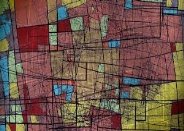

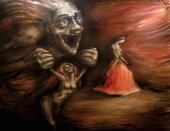
Cubism Аbstract art Expressionism
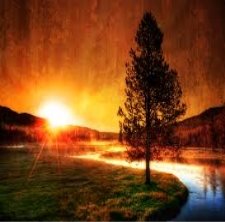
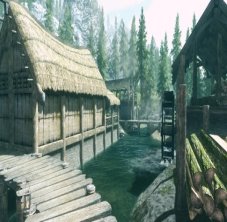
Surrealism Realism
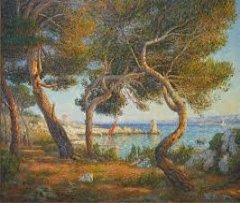
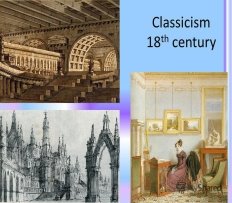
![]()
Impressionism Classicism
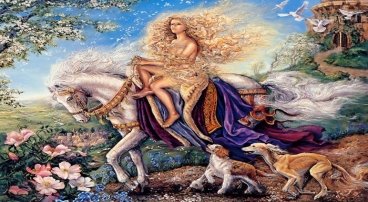
Romanticism
T: At end of the lesson I want to thank you. I’m quite satisfied with your work.
T: That’s the bell. The lesson is over. See you. Goodbye!

про публікацію авторської розробки
Додати розробку

